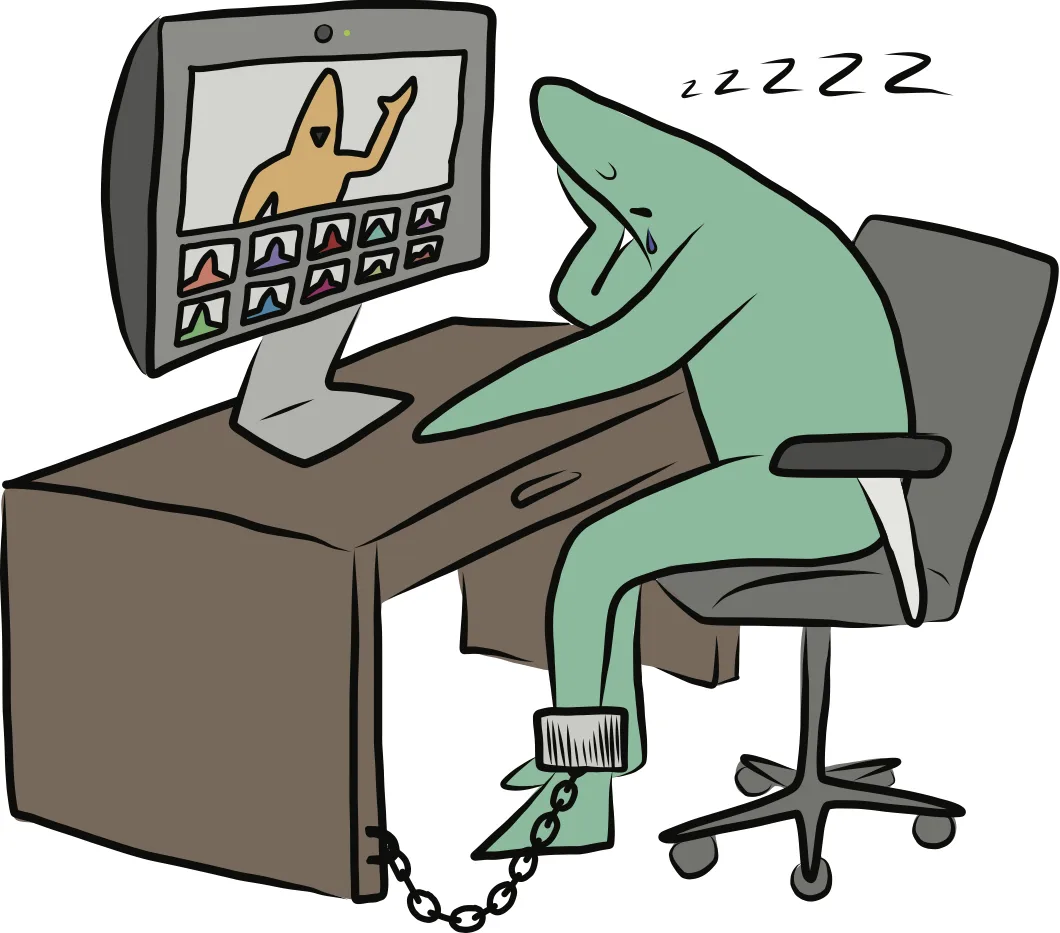Are You Wearing Your People Out With Entirely Too Much Zoom?
Written by

Think of this as a public service announcement, I guess, but chances are good that you're over-Zooming these days, and that's wearing your team out. We're on Zoom (or the equivalent) because:
- We're trying to emulate the physical presence we gave up during this work from home period.
- Staying "safe at home" in this social distancing has us missing humans, and seeing other humans via video quenches the thirst of loneliness.
- Principals/owners don't trust their employees fully, yet, and want to see with their own eyes that someone is actually working, chained to their home desk, and fully earning their government-subsidized paycheck.
But too much of this is going to wear people out. I see it in their eyes and I hear it in their voices. They are:
- Tired of having to sit in one place to stay within the video camera's field of view.
- Tired of tidying up the background and making sure there are no embarrassing books on the bookshelf just behind them. (Few of which they've really read.)
- Tired of keeping little kids and big pets out of the scenes of chaos.
Most of all, though, is the nonverbal overload that Zooming causes in our minds. You don't have long, uninterrupted direct eye gaze—especially close up—when in normal life, and you shouldn't have it in e-life, either. (Jeremy Bailenson, "Why Zoom Meetings Can Exhaust Us"; subscription required).
Bailenson explains that we have ways of adapting when we face forced violations of our personal space. For example, we don't stare into someone else's eyes 13.4" from us in an elevator. We look off into space or pretend to be interested in someone's shoelaces. We also back away, instinctively, when we are too close to someone. But the default settings in Zoom make the faces large, which signals that we are too close...but can't do anything about it. But then again if you step back, and the other participants might think you are disengaged. So much second guessing.
I get it. Zooming feels more human than calling, but too much "humaning" and you're going to be a lot less of one. Or at least a grouchy one.
So ease up on the video requirements for your team. In fact, ease up on the mandatory meetings where everyone from the ship's bowels joins you on deck. It's just a bit much. Some of those people shouldn't be out in public anyway.
More specifically, give people the option of skipping the video part and you'll get a nicer employer review this next round. At a minimum, have the person speaking present via video and let the others turn off their cameras.
We need to pull this video thing back down to a manageable place. Your people need to find their own sweet spot, and you need to let them do that. Don't mandate video participation any more than you might mandate how close someone sits to the conference table or what they can look at while someone else is talking.
All this forced video stuff reminds me of the times when we'd hold one of the boy's face with a hand on each side, forcing them to look forward into our eyes during a verbal scolding, while they did their best to look anywhere but forward in signs of tiny defiance. It's okay if your team looks elsewhere or quits staring at your face every waking minute of a 120-minute video call that should have probably been an 11-minute audio call.
So, to summarize this public service announcement:
- Don't require so many "video-on" calls.
- Trust your people or just fire them.
- Make virtual happy hours as optional as seeing who wants to meet you at the bar for a drink.
You can't legislate engagement, and some people want more than others. Let engagement find its own level so that we don't have to feel like we're in an episode of "The Real World"!

